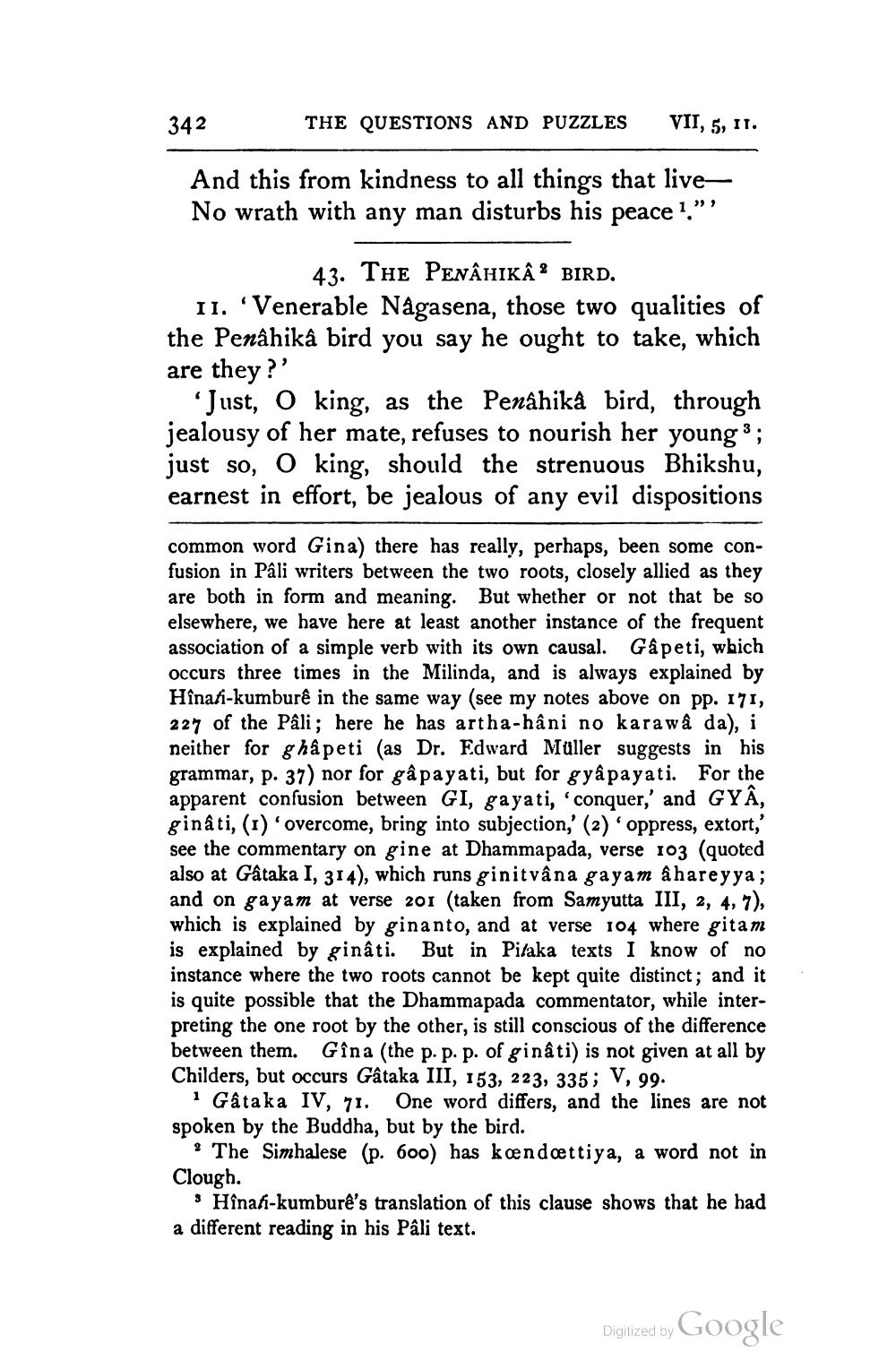________________
342
THE QUESTIONS AND PUZZLES
VII, 5, 11.
And this from kindness to all things that liveNo wrath with any man disturbs his peace ?."'
43. THE PENÂHIKÂ BIRD. 11. 'Venerable Nâgasena, those two qualities of the Penâhikâ bird you say he ought to take, which are they?'
Just, o king, as the Penâhikà bird, through jealousy of her mate, refuses to nourish her young 3 ; just so, o king, should the strenuous Bhikshu, earnest in effort, be jealous of any evil dispositions
common word Gina) there has really, perhaps, been some confusion in Pali writers between the two roots, closely allied as they are both in form and meaning. But whether or not that be so elsewhere, we have here at least another instance of the frequent association of a simple verb with its own causal. Gapeti, which occurs three times in the Milinda, and is always explained by Hînafi-kumburê in the same way (see my notes above on pp. 171, 227 of the Pali; here he has artha-hâni no karawa da), i neither for ghåpeti (as Dr. Edward Müller suggests in his grammar, p. 37) nor for gâpayati, but for gyâpayati. For the apparent confusion between GI, gayati, 'conquer,' and GYÂ, ginâti, (1) overcome, bring into subjection,' (2) 'oppress, extort,' see the commentary on gine at Dhammapada, verse 103 (quoted also at Gâtaka I, 314), which runs ginitvâna gayam â hareyya; and on gayam at verse 201 (taken from Samyutta III, 2, 4, 7), which is explained by ginanto, and at verse 104 where gitam is explained by ginâti. But in Pitaka texts I know of no instance where the two roots cannot be kept quite distinct; and it is quite possible that the Dhammapada commentator, while interpreting the one root by the other, is still conscious of the difference between them. Gîna (the p. p. p. of ginâti) is not given at all by Childers, but occurs Gâtaka III, 153, 223, 335; V, 99.
i Gataka IV, 71. One word differs, and the lines are not spoken by the Buddha, but by the bird.
* The Simhalese (p. 600) has kændættiya, a word not in Clough.
Hînati-kumburê's translation of this clause shows that he had a different reading in his Pâli text.
Digitized by Google




